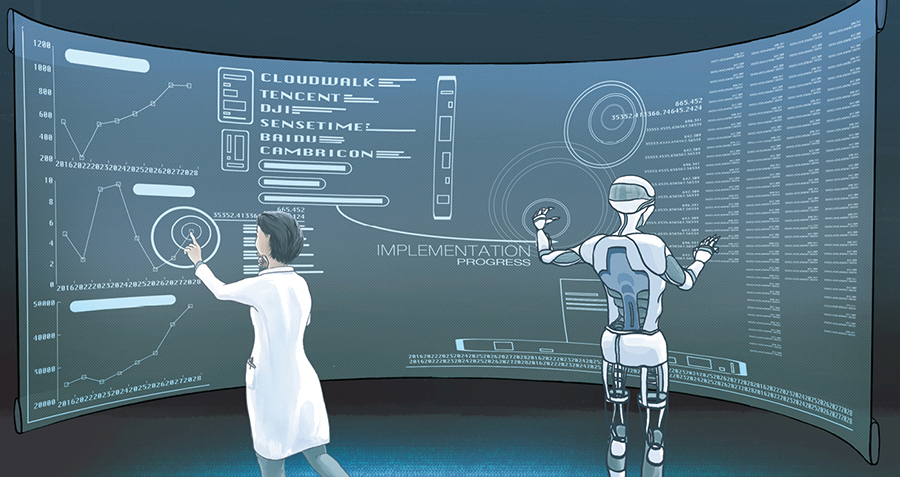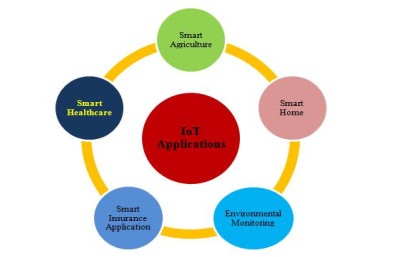Report on Strategic AI Partnership to Advance Sustainable Development Goals in Asia
Executive Summary
A new partnership between technology firms Blaize and Starshine has been established to deploy a hybrid Artificial Intelligence (AI) platform. The initiative is focused on developing smart city applications across key Asian markets, including India, Indonesia, Japan, South Korea, and China. The core objective is to facilitate real-time, localized decision-making at the edge, a critical component for advancing urban sustainability and resilience in direct alignment with the United Nations Sustainable Development Goals (SDGs).
Alignment with Sustainable Development Goals (SDGs)
The deployment of this AI platform is positioned to make significant contributions to several SDGs by transforming urban infrastructure and services.
- SDG 11: Sustainable Cities and Communities: This initiative directly supports the goal of making cities inclusive, safe, resilient, and sustainable. By enabling real-time data processing for traffic management, public safety, and resource allocation, the platform helps create more efficient and liveable urban environments.
- SDG 9: Industry, Innovation, and Infrastructure: The partnership represents a key technological innovation aimed at building resilient infrastructure. The AI platform serves as a foundational technology for future smart city projects, fostering innovation and upgrading industrial capabilities in the target nations.
- SDG 13: Climate Action: Smart city applications powered by this AI can play a crucial role in climate change mitigation. Potential uses include optimizing energy grids, reducing traffic congestion and associated emissions, and managing municipal resources more effectively to lower the carbon footprint of urban centers.
- SDG 7: Affordable and Clean Energy: The technology can be applied to manage and optimize energy consumption in public and private buildings, contributing to greater energy efficiency and supporting the integration of renewable energy sources into smart grids.
Partnership Scope and Objectives
The collaboration is structured to achieve specific technological and geographical outcomes that support the aforementioned development goals.
- Technology Deployment: To implement a hybrid AI platform designed for high-efficiency processing at the edge, reducing latency and reliance on centralized data centers.
- Core Capability: To enable localized, real-time analysis and decision-making, which is essential for responsive and adaptive smart city management.
- Geographic Focus: To target deployment in the strategic and rapidly urbanizing markets of India, Indonesia, Japan, South Korea, and China.
- Primary Application: To serve as the technological backbone for a wide range of smart city solutions, enhancing urban services and sustainability.
Analysis of the Article in Relation to Sustainable Development Goals
1. Which SDGs are addressed or connected to the issues highlighted in the article?
-
SDG 9: Industry, Innovation and Infrastructure
The article discusses the deployment of a “hybrid AI platform” and “connectivity points,” which are core components of modern technological infrastructure and innovation. This directly aligns with the goal of building resilient infrastructure and fostering innovation.
-
SDG 11: Sustainable Cities and Communities
The primary application mentioned is for “smart city” development. The goal of the platform is to “enable real-time, localised decision-making at the edge for cities,” which contributes to making cities more inclusive, safe, resilient, and sustainable.
-
SDG 17: Partnerships for the Goals
The article explicitly states that “Blaize and Starshine are partnering” to achieve their goal. This collaboration between two companies to deploy technology across several countries (India, Indonesia, Japan, South Korea, and China) exemplifies a multi-stakeholder partnership to advance sustainable development.
2. What specific targets under those SDGs can be identified based on the article’s content?
-
Under SDG 9: Industry, Innovation and Infrastructure
- Target 9.1: Develop quality, reliable, sustainable and resilient infrastructure, including regional and transborder infrastructure, to support economic development and human well-being. The deployment of an AI platform across multiple Asian countries is a direct effort to develop regional technological infrastructure.
- Target 9.c: Significantly increase access to information and communications technology. Implementing an AI platform for smart cities inherently involves increasing access to and utilization of advanced ICT.
-
Under SDG 11: Sustainable Cities and Communities
- Target 11.a: Support positive economic, social and environmental links between urban, peri-urban and rural areas by strengthening national and regional development planning. The platform for “localised decision-making” can enhance regional development planning by providing data and insights for better resource management in cities.
-
Under SDG 17: Partnerships for the Goals
- Target 17.16: Enhance the Global Partnership for Sustainable Development, complemented by multi-stakeholder partnerships that mobilize and share knowledge, expertise, technology and financial resources. The partnership between Blaize and Starshine is a clear example of a private-sector partnership sharing technology and expertise.
- Target 17.17: Encourage and promote effective public, public-private and civil society partnerships. This initiative represents a private-private partnership aimed at providing solutions for public infrastructure (smart cities).
3. Are there any indicators mentioned or implied in the article that can be used to measure progress towards the identified targets?
The article is brief and does not provide quantitative data, but it implies several qualitative indicators:
-
For SDG 9:
The primary implied indicator is the successful deployment of the hybrid AI platform in the specified countries. Progress would be measured by the establishment and operational status of this new ICT infrastructure.
-
For SDG 11:
An implied indicator is the number of cities adopting the platform to enable “real-time, localised decision-making.” The existence of such systems would be a measure of progress towards more technologically advanced and sustainable urban management.
-
For SDG 17:
The most direct indicator mentioned is the existence of the partnership itself between “Blaize and Starshine.” The formation and continuation of this collaboration serve as an indicator for Target 17.16 and 17.17.
4. Table of SDGs, Targets, and Indicators
| SDGs | Targets | Indicators (Identified or Implied in the Article) |
|---|---|---|
| SDG 9: Industry, Innovation and Infrastructure | 9.1: Develop quality, reliable, sustainable and resilient infrastructure. | Deployment and operational status of the “hybrid AI platform” and “connectivity points.” |
| SDG 11: Sustainable Cities and Communities | 11.a: Support positive economic, social and environmental links… by strengthening national and regional development planning. | Number of cities adopting the platform for “real-time, localised decision-making.” |
| SDG 17: Partnerships for the Goals | 17.16: Enhance the Global Partnership for Sustainable Development… complemented by multi-stakeholder partnerships. | The existence of the formal partnership between “Blaize and Starshine.” |
Source: smartcitiesworld.net







